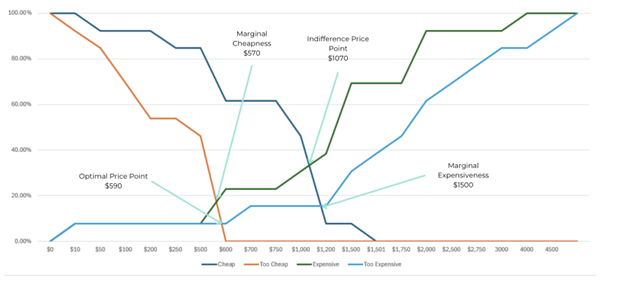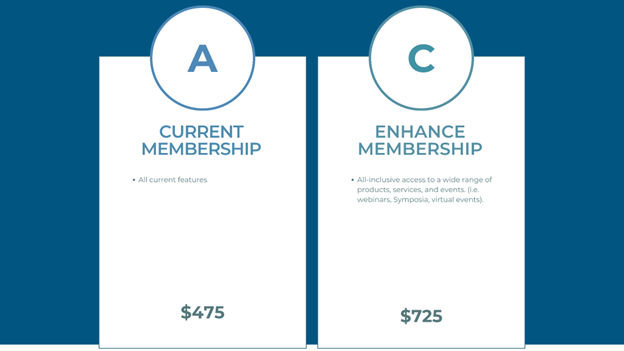Navigating Pricing Waters: A Comprehensive Analysis Methodology
The following is an excerpt from our book, Pricing for Associations, available now on Amazon.
Pricing decisions carry substantial weight. To chart a course toward optimal pricing strategies, associations can leverage sophisticated methodologies. Let’s explore three powerful pricing analysis methods – Van Westendorp, Conjoint Analysis, and Max-Diff – providing definitions, use cases, and illustrative examples.
1. Van Westendorp Analysis:
Definition: The Van Westendorp Price Sensitivity Meter is a survey-based approach that explores the acceptable price range for a product or service.
When to Use:
Early Pricing Exploration: Ideal for early stages of product development or when exploring pricing for a new offering.
Understanding Perceived Value: Useful for gauging how potential consumers perceive the value of a product in relation to its price.
Methodology:
Price Elicitation Questions: Ask respondents a series of questions, such as:
At what price would you consider the product to be so expensive that you would not consider buying it?
At what price would you consider the product to be priced so low that you would question its quality?
Example:
Responses are plotted on a graph, creating an "acceptable price range" and highlighting price thresholds.
2. Conjoint Analysis:
Definition: Conjoint Analysis assesses how different product attributes and pricing options influence consumer preferences.
When to Use:
Product Optimization: Best suited for optimizing product features and pricing in competitive markets.
Trade-Off Analysis: Useful for understanding the trade-offs consumers are willing to make between different attributes.
Methodology:
Choice-Based Questions: Respondents are presented with hypothetical product profiles and asked to choose their preferred option.
Statistical Analysis: Advanced statistical techniques are used to derive the importance of different attributes and their impact on pricing.
Example:
If a software product has options for speed, storage, and price, respondents make choices between different combinations to reveal preferences.
3. Max-Diff (Maximum Difference) Analysis:
Definition: Max-Diff Analysis identifies the most and least preferred features or attributes within a set, helping to understand relative importance.
When to Use:
Feature Prioritization: Effective for prioritizing features, services, or attributes in product development.
Segmented Preferences: Useful when exploring preferences across different segments of your audience.
Methodology:
Pairwise Comparison: Respondents are presented with sets of features and asked to choose the most and least important in each set.
Analysis of Preferences: The analysis identifies the features that are consistently rated as most and least important.
Example:
In a survey about a conference, respondents might be asked to choose the most and least important aspects among factors like keynote speakers, networking events, and registration fees.
As associations navigate the intricate waters of pricing decisions, employing robust analysis methodologies becomes pivotal. Van Westendorp, Conjoint Analysis, and Max-Diff each offer unique insights into consumer preferences, perceived value, and feature prioritization. The choice of methodology depends on the specific goals of the association, the stage of product development, and the nature of the market. By embracing these methodologies, associations can make informed pricing decisions that resonate with their audience and drive sustained success.





